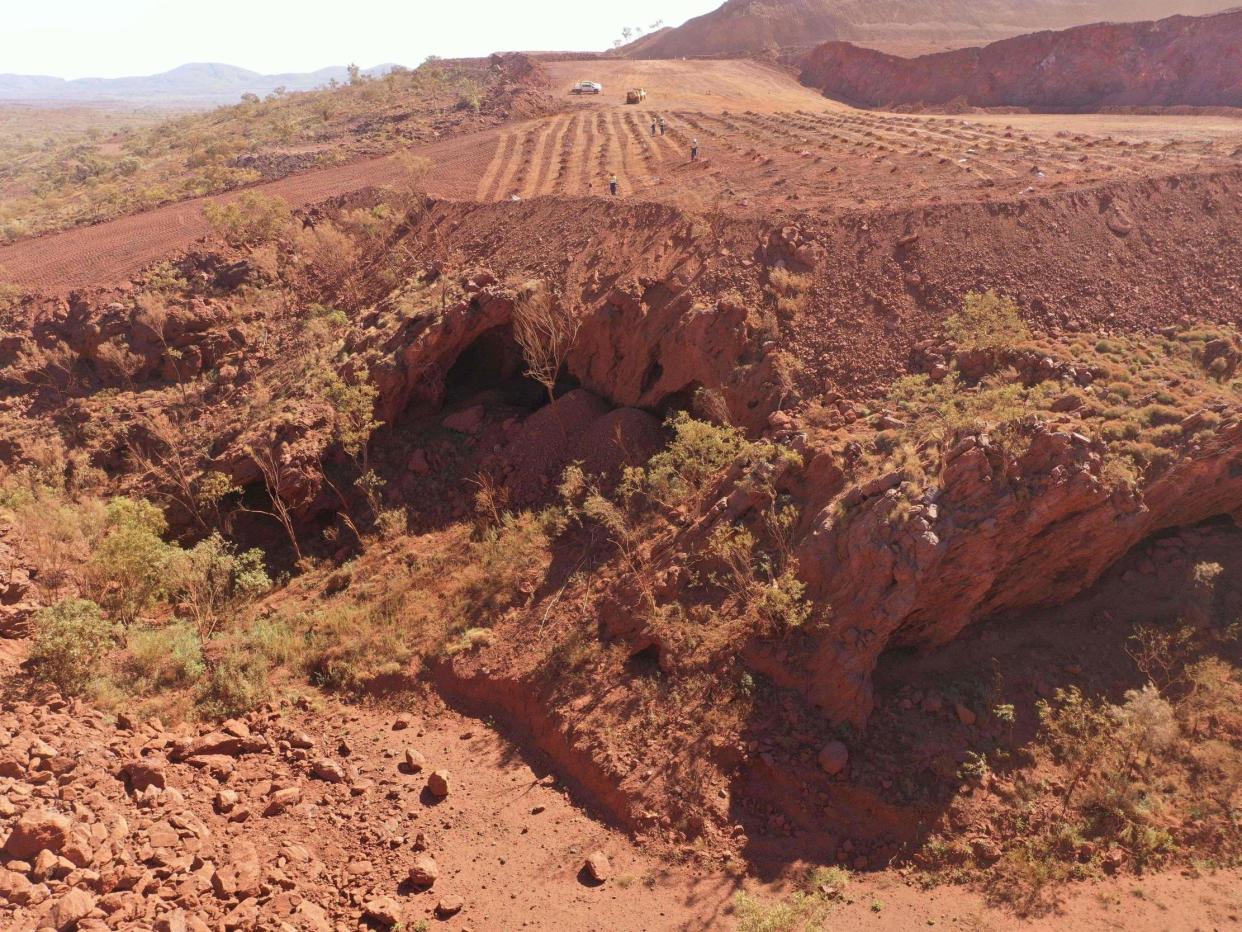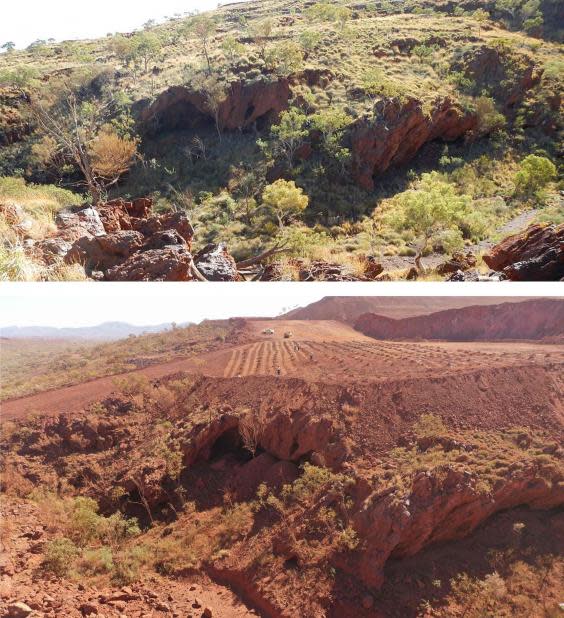Mining firm ‘knew significance’ of 46,000-year-old Aboriginal caves before blowing site up

A mining company that blew up one of Australia's oldest known Aboriginal sites knew about the area's cultural significance six years before carrying out the demolition, according to a report.
Metal mining giant Rio Tinto demolished the Juukan Gorge caves in the Pilbara region, Western Australian, on 24 May in what has been described as an "incomprehensible mistake".
The caves were a sacred Aboriginal heritage site with evidence of human occupation stretching back 46,000 years.
The two cave systems were the only inland site in Australia to show evidence of continual human occupation through the last Ice Age and numerous ancient artefacts had been recovered there.
It has now emerged that Rio Tinto knew about the archaeological significance of the caves before blowing them up.
According to a report by Australian Broadcasting Corporation (ABC), advice delivered to Rio Tinto and the Puutu Kunti Kurrama and Pinikura (PKKP) (a body representing indigenous people of the region) six years ago but was never publicly released.
A 2014 report by archaeologist Dr Michael Slack confirmed one of the sites - the Juukan-2 (Brock-21) cave - was rare in Australia and unique in the Pilbara, according to ABC.
"The site was found to contain a cultural sequence spanning over 40,000 years, with a high frequency of flaked stone artefacts, rare abundance of faunal remains, unique stone tools, preserved human hair and with sediment containing a pollen record charting thousands of years of environmental changes," Dr Slack wrote in the report.
"In many of these respects, the site is the only one in the Pilbara to contain such aspects of material culture and provide a likely strong connection through DNA analysis to the contemporary traditional owners of such old Pleistocene antiquity."

The PKKP said earlier this month it had applied to visit the site and negotiate to stop the blast or limit the damage but were told explosives had already been laid and it was impossible to remove them, the Sydney Morning Herald reported.
The mining giant was first granted approval for work at the Brockman 4 iron ore project in 2013, but archaeological excavation in 2014 recovered around 7,000 ancient artefacts including grinding stones, a bone sharpened into a tool and a 4,000-year-old braided hair belt, analysis of which revealed a direct genetic link between the PKKP today, and the prehistoric cave-dwelling population.
The demolition went ahead with all the necessary approvals in place, despite the archaeological finds indicating the site was even more significant than previously thought.
The incident has sparked international outrage, with one Unesco expert comparing the legal loss of Juukan Gorge caves by Rio Tinto to Isis's demolition of Palmyra.
Rio Tinto’s iron ore chief executive Chris Salisbury apologised for the distress the company has caused.
"Our relationship with the PKKP matters a lot to Rio Tinto, having worked together for many years.
“We have operated on PKKP country under a comprehensive and mutually agreed participation agreement since 2011.
“At Juukan, in partnership with the PKKP, we followed a heritage approval process for more than 10 years. In 2014 we performed a large-scale exercise in the Juukan area to preserve significant cultural heritage artefacts, recovering approximately 7,000 objects.”
Salisbury added that the destruction of the caves was a "misunderstanding" and that his company took "full accountability".


